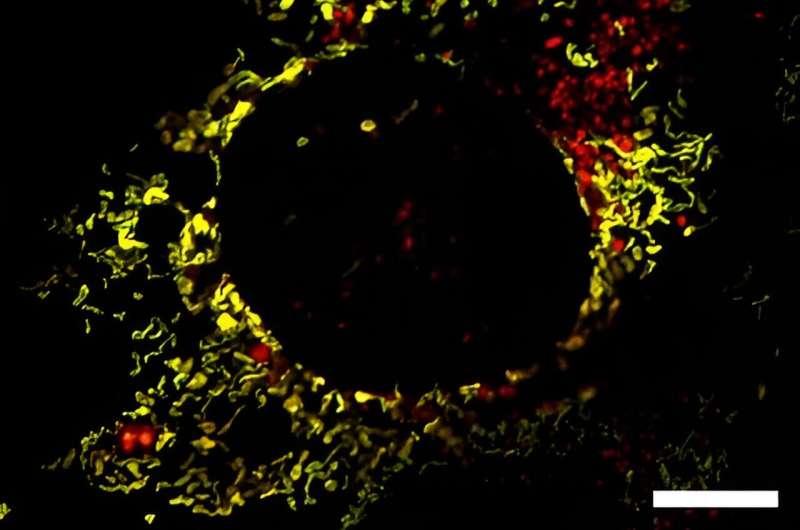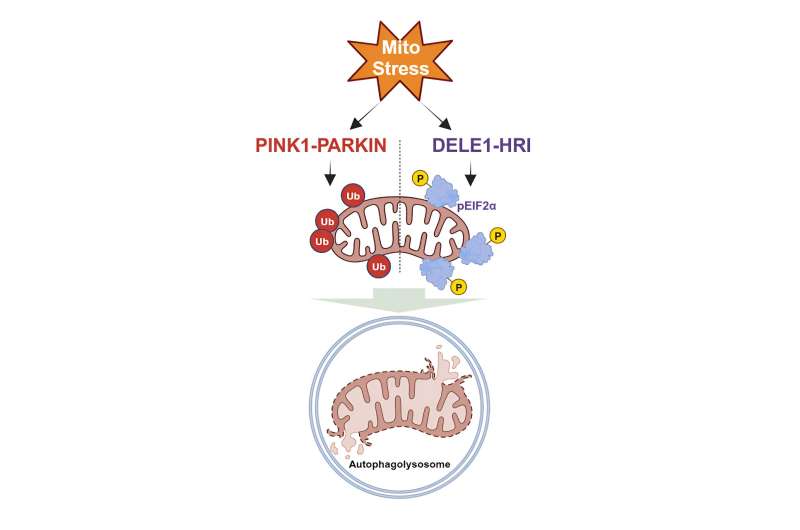This article has been reviewed according to Science X's editorial process and policies. Editors have highlighted the following attributes while ensuring the content's credibility:
fact-checked
peer-reviewed publication
trusted source
proofread
Study reveals how stress pathways activate a cell's emergency response procedures

Mayday! SOS! Distress signals like these are used around the world to indicate an emergency. The cells that make up your body also have their own versions of emergency signals. These get activated if a cell is infected by a virus or bacteria, or if there is a lack of important building blocks like amino acids, for example. A Caltech study identifies how these cellular "stress pathways" activate quality control mechanisms that clean up the damage during a crisis.
The research was conducted in the laboratory of David Chan, Harold and Violet Alvarez Professor of Biology and dean of graduate studies, and is described in a paper titled "The HRI branch of the integrated stress response selectively triggers mitophagy" published in the journal Molecular Cell.
There are four distinct stress pathways that trigger the cell to stop its normal functions. Each stress pathway has its own associated protein called a kinase, which gets activated like a security guard jumping to attention after hearing an alarm.
Once activated, the kinase modifies a protein called EIF2 by adding a phosphorous compound to it, which disables EIF2. EIF2 is the main initiator for the cell to carry out its normal functions of producing proteins, so "phosphorylating" it causes most protein production in the cell to pause.
"If there's a fire, you want to stop everything you're doing and take care of the fire," says postdoctoral scholar Yogaditya Chakrabarty, the study's first author. "Stopping EIF2 through phosphorylation effectively shuts down the cell's functions so that it can focus on the emergency."

During stress, the cell also has to activate "quality control" pathways that ensure the fidelity of cellular components. These quality control mechanisms are less like security guards and more like janitors—they can degrade broken or damaged proteins and cellular parts. It was previously unknown how the stress pathways influenced and interacted with the quality control pathways.
The new study shows that, during a stress situation, the phosphorylated EIF2 becomes incorporated on the surface of the mitochondria, which activates the quality control response for these organelles. In this way, phosphorylated EIF2 serves double roles as security guard and janitor.
Understanding the specifics of these cellular processes is important for the study of diseases like Alzheimer's and Parkinson's, as these and other neurological disorders are characterized by the loss of quality control mechanisms.
"Mitochondria are generally known as 'the powerhouse of the cell,' and we are learning that the cell has intricate mechanisms to protect the critical functions of its power generator," says Chakrabarty. He is currently expanding this work to explore whether stress pathways also interact with other quality control mechanisms.
More information: Yogaditya Chakrabarty et al, The HRI branch of the integrated stress response selectively triggers mitophagy, Molecular Cell (2024). DOI: 10.1016/j.molcel.2024.01.016
Journal information: Molecular Cell
Provided by California Institute of Technology



















